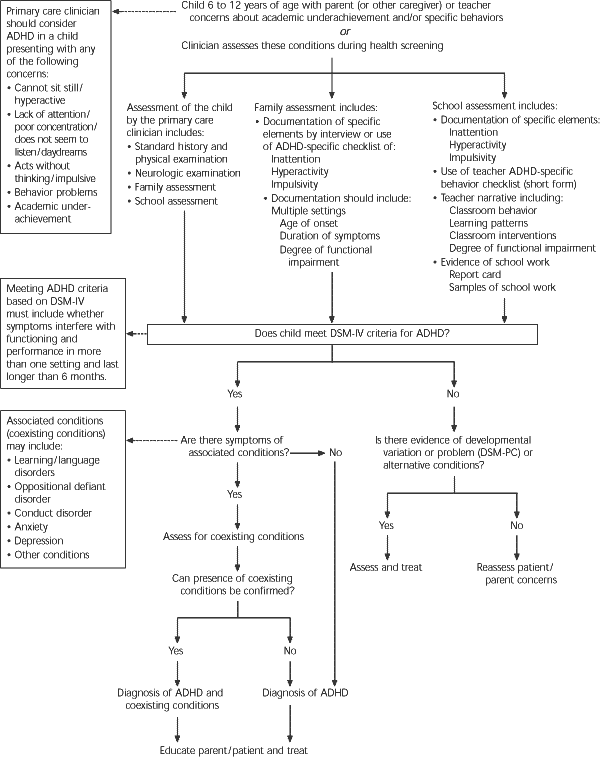|
|
|
| Attention Deficit
and Hyperactivity Disorders
|
|||
|
Meet Cody
|
|
||
| About a Year ago, Cody was Diagnosed with ADHD. He's going to help us along in our journey today. Yay.
|
|||
|
Of particular interest to ADHD researchers are the areas of the brain known as the prefrontal cortex and the basal ganglia. These centers are thought to control behavior and behavior planning, and are thus critical in a behavioral disorder such as ADHD.
|
|
||
| You may be asking yourself, what is ADHD?
|
ADHD is a disorder of the brain which results in loss of concentration, hyperactivity, and/or impulsiveness.
|
||
|
Statistics
|
|
||
|
The Brief History |
|
||
| So What Causes ADHD? |
|
||
| How is ADHD diagnosed? Patient history as well as a clinical evaluation is plugged into an algorithm such as this one, and the results determine whether or not the patient has the disorder or another type of behavioral disorder. DSM-IV Guidelines are strictly followed. |
 |
||
| The 3 Types of ADHD |
|
||
| 3 Classes of medication |
|
||
|
|
|||
| Stimulants
Methylphenidates |
Stimulants
Amphetamines |
Adjuvants
α2-Adrenergic agonists |
Alternatives
Selective Norepinephrine Reuptake Inhibitors |
| How it all works: The stimulants work by increasing production of Dopamine via agonist binding sites on the presynaptic neuron. This causes increased amounts of Dopamine, which in turn counters any imbalance that may have occured. These stimulants also have an effect on the reuptake of Dopamine, but it is not well understood. The alpha-2 stimulants work in much the same way, only on the norepinephrine agonist binding sites. The selective norepinephrine reuptake inhibitors work just as they are named, the slow reuptake of norepinephrine in the synapse. This causes the norepinephrine to have a prolonged effect without increasing the amount present. It is currently thought that autoreceptors on the presynaptic neuron act as sort of a thermostat for the cells. They aid in monitoring neurotransmitter concentrations and help regulate stimulatory and depressant responses. |
 |
||
| American
Academy of Child and Adolescent Psychiatry, International Guidelines Center Special Thanks To: Medline Plus (http://www.nlm.nih.gov/medlineplus/attentiondeficitdisorderwithhyperactivity.html) National Attention Deficit Disorder Association (http://www.add.org) National Institue of Mental Health (http://www.nimh.nih.gov)
|
|||